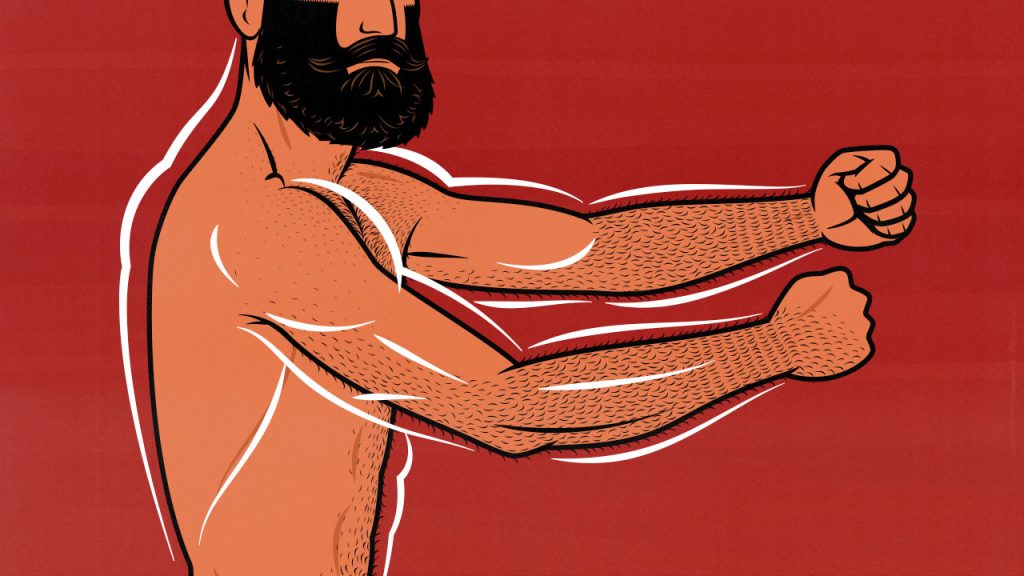
The Best Push/Pull/Legs (PPL) Routine for Building Muscle
Push/Pull/Legs (PPL) routines divide your muscles into three groups: your pushing muscles, your pulling muscles, and your legs. Each group of muscles gets a dedicated training day, allowing you to work out six days per week while still giving your muscles 3-4 days to recover.
It’s a powerful way to train. You can stimulate a ton of muscle growth this way. These routines are incredibly popular with serious bodybuilders, rivalled only by the mighty Bro Split.
The other great advantage of Push/Pull/Legs routines is they’re relatively easy. Full-body workouts are great for beginners, but as you get stronger, the weight looms heavier, and training every muscle in a single workout can become oppressive. Much easier to divide up the workload.
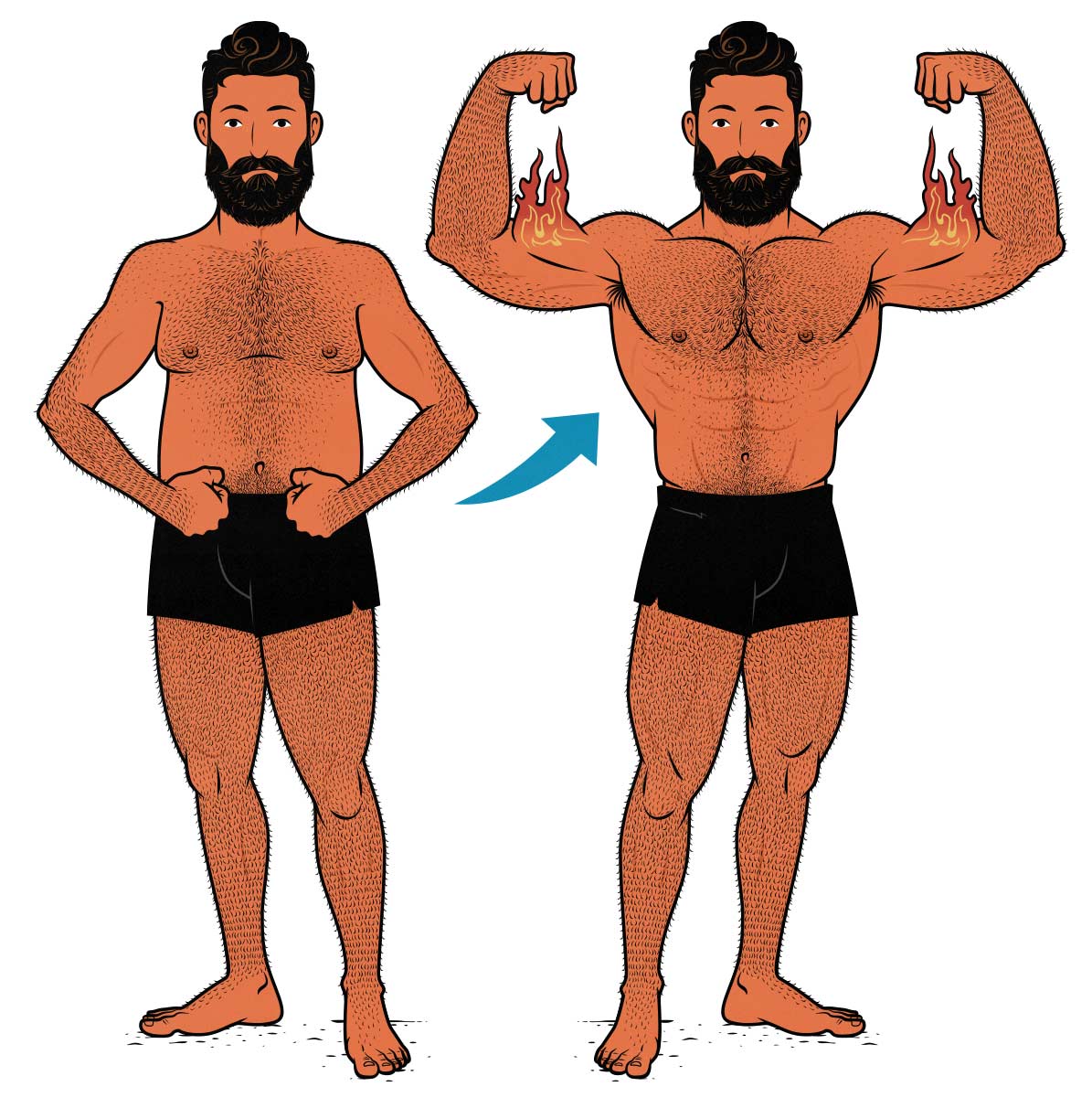
What is a Push/Pull/Legs Split?
Push/Pull/Legs routines divide your muscles into pushing, pulling, and leg muscles. This offers a couple of advantages. The first benefit is that when you’re training fewer muscles per workout, you can give them greater focus per workout.
- Push Day focuses on your chest, front delts, side delts, and triceps.
- Pull Day focuses on your lats, traps, rhomboids, rear delts, and rotator cuff.
- Leg Day focuses on your quads, hips, hamstrings, spinal erectors, and baby bulls.
The second benefit is that by splitting your muscles into different groups, you can train more often while still giving your muscles plenty of time to rest. You can train your chest every Monday and Thursday, your back every Tuesday and Friday, and your legs every Wednesday and Saturday.*
*Though, to be fair, Wednesday and Saturday are often fairly hectic days. Those are also the days when you’re most likely to feel the onset of a mild 24-hour cold. You might have to skip some of those workouts.
Push Day Exercises
Push Day focuses on the pushing muscles. Usually, you’ll start with the biggest muscles and work your way smaller. Often, that means starting with your mid/lower chest, then your upper chest, then your front delts, then your triceps, and then your side delts. You probably only need one exercise for each, so that might mean doing dips, incline bench presses, overhead presses, triceps extensions, and lateral raises.
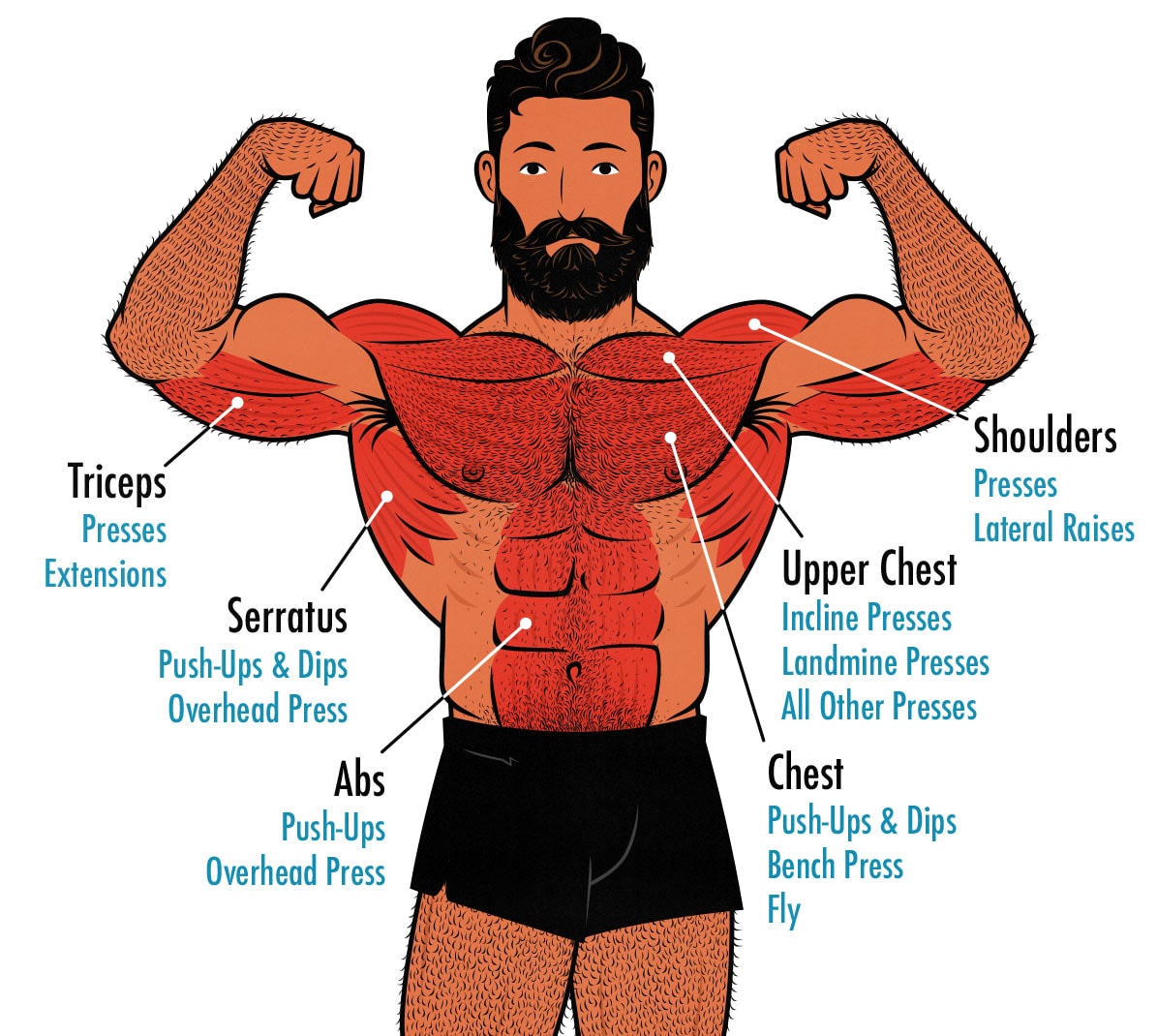
Finally, don’t forget your serratus muscles! You need strong serratus muscles to have a strong shoulder girdle, but they aren’t trained very well by bench presses. When you pin your shoulders back, you take your serratus muscles out of the exercise. That’s why we recommend including some push-ups, dips, and/or overhead presses.
Pull Day Exercises
Pull Day focuses on your pulling muscles. These are the hardest workouts to understand. If you want to go deeper, we have a full article explaining all your back muscles. To keep things simple, you probably want a vertical pulling exercise like a chin-up, a horizontal pulling exercise like a row, a rear delt/rotator cuff exercise, and an exercise for your biceps. You can do more, but you probably shouldn’t do less.
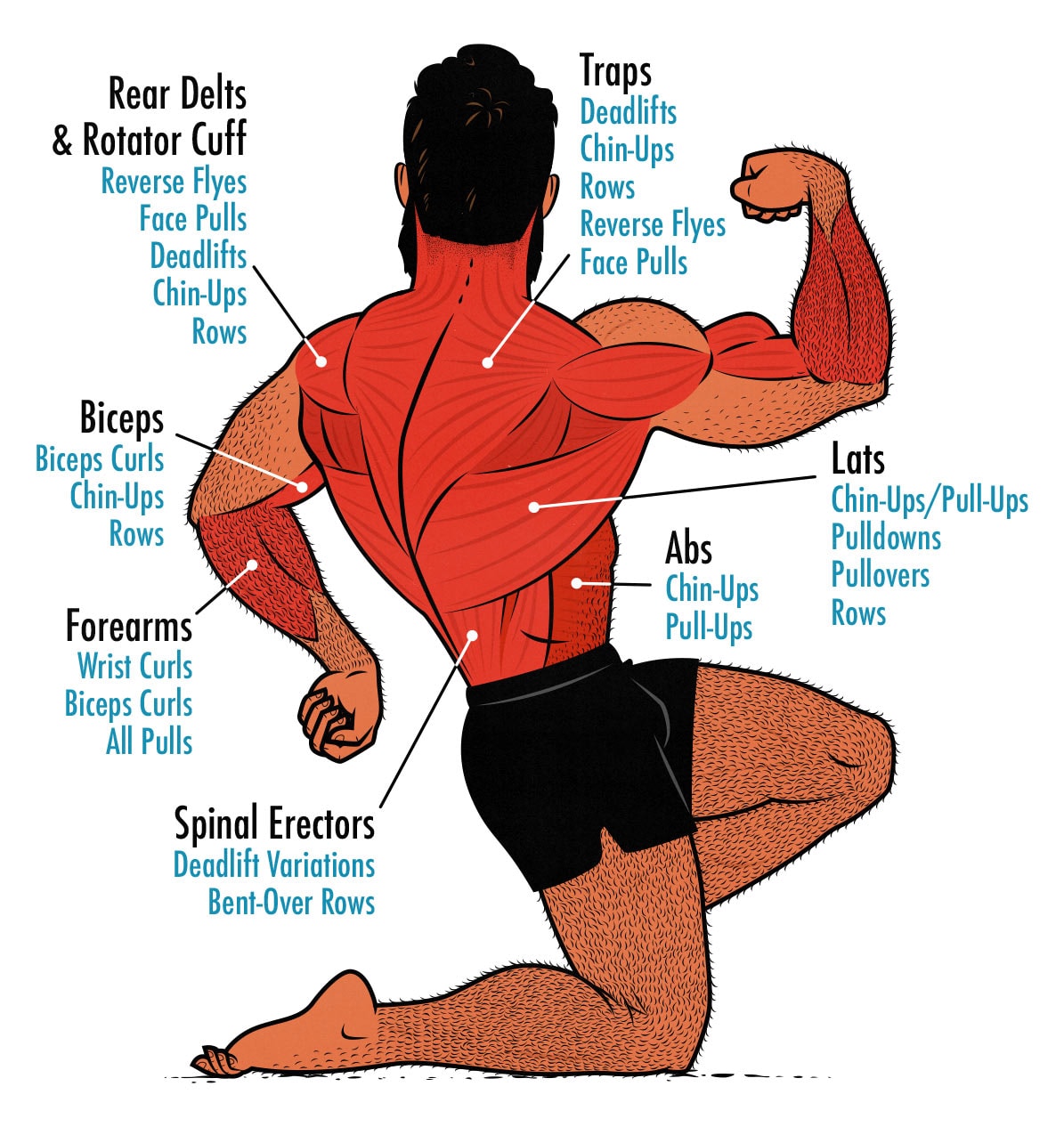
You’ll notice that we haven’t done much to stimulate your spinal erectors. You could solve that by doing deadlifts on Pull Day. They’re a great fit. But it usually makes more sense to save those for Leg Day. That way, you aren’t working your hips two days in a row.
Leg Day Exercises
Leg Day focuses on your legs. Fortunately, the leg muscles are fairly simple to train. Squats work your quads and hips, and deadlifts work your hips, hamstrings, and back. After that, if you want, you can add in some calf raises. And because none of those exercises is big or intimidating, it’s also a great opportunity to throw in some ab exercises.
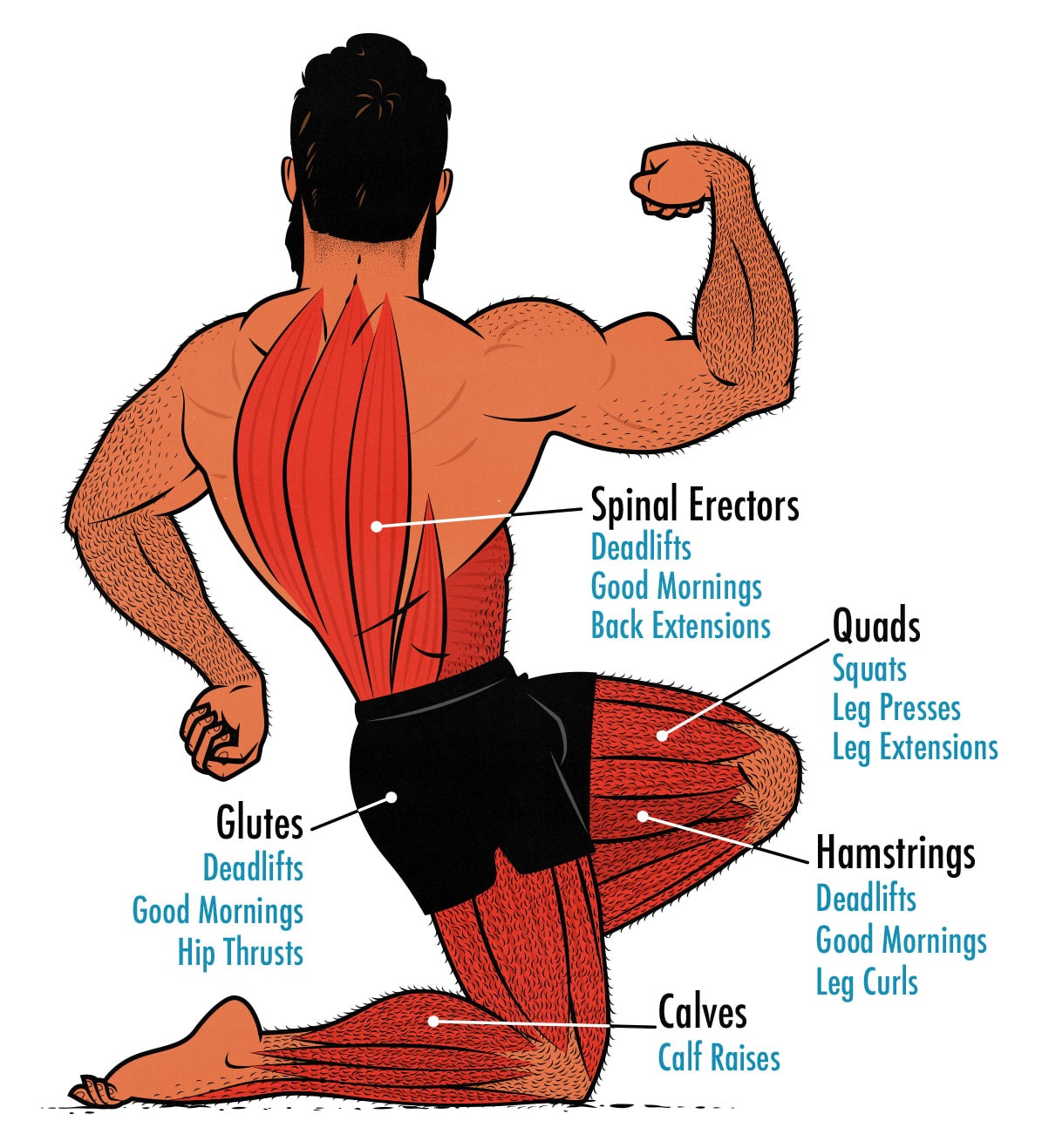
Notice that squat variations and leg presses both emphasize your quads. You can do either or both. The same is true with deadlift variations, good mornings, step-ups, and hip thrusts. You can pick your favourite or use a combination.
I like minimalist leg workouts, so I’ll usually do front squats, Romanian deadlifts, maybe some ab exercises, and then call it a day. When Marco was training athletes, he took the exact opposite approach. He’d have them doing tons of unilateral work after finishing their main exercises: split squats, lunges, step-ups, and so on.
Hip thrusts aren’t as effective as most of the other exercises (more on that here), but they’re good if your glutes—and only your glutes—need a bit of extra love at the end of a workout. My wife likes doing light one-legged dumbbell hip thrusts as a finisher.
The Workout Routine
Push/Pull/Legs routines work best when you’re training 6 days per week. If you’re training less often than that, I recommend a full-body routine or an upper/lower split. We have a full article on training splits here. That gives us a workout routine that looks like this:
- Monday: Push Day
- Tuesday: Pull Day
- Wednesday: Leg Day
- Thursday: Push Day
- Friday: Pull Day
- Saturday: Leg Day
- Sunday: Rest
When you have two of each workout per week, one option is to use undulating periodization, where you have a heavier day and a lighter day (more on rep ranges here). That’s a perfectly good approach, but it’s more common for gaining strength than for building muscle. We’re going to teach you a different approach. Each workout will focus on a different main exercise:
- Monday: Bench Day
- Tuesday: Chin-Up Day
- Wednesday: Squat Day
- Thursday: Overhead Press Day
- Friday: Pull-Up Day
- Saturday: Deadlift Day
- Sunday: Rest
Your goal during each workout is to progressively overload that main exercise. That gives you a clear goal: lift more weight or get more reps on those big compound exercises. Then, after you give that first exercise your best effort, you can have some fun bodybuilding.
Workout 1: Push Day (Bench Press)
| EXERCISE | SETS | REPS |
|---|---|---|
| Bench Press | 4–5 sets | 6-12 reps |
| Incline Bench Press | 3–4 sets | 8-12 reps |
| Overhead Dumbbell Press | 3 sets | 10-15 reps |
| Skull Crushers | 3 sets | 10-15 reps |
| Lounging Lateral Raises | 3 sets | 12–15 reps |
The first Push Day is built around a horizontal press, such as the bench press. I like to use the dumbbell bench press, barbell bench press, or weighted dip. The chest press machine can work, too. Pick the one you like, stick with it for a few months, and then reevaluate.
Next is an incline press for your upper chest and front delts. An incline bench press works well here. Landmine presses are another good choice. Some machines are great for this, too.
After that, we have an overhead dumbbell press. This is a lighter pressing variation that tends to be pretty easy on the joints. It’s great for your front delts and okay for your side delts. We’ve got lounging lateral raises to work your side delts harder.
Skull crushers are an important part of building a bigger bench press. They also train the long heads of your triceps, which haven’t been trained yet.
Workout 2: Pull Day (Chin-Up)
| EXERCISE | SETS | REPS |
|---|---|---|
| Chin-Up | 4–5 sets | 6–12 reps |
| Seated Cable Row | 4–5 sets | 8-12 reps |
| Lat Pulldown | 4 sets | 10-15 reps |
| Lying Biceps Curl | 3 sets | 10-15 reps |
| Forearm Curl | 3 sets | 12–15 reps |
I recommend doing the chin-ups with an angled or neutral grip, but underhand is fine, too. If you can do more than 12 reps, add some weight. I like to keep them a bit heavier. I’ll usually add enough weight to keep me under 8 reps.
Seated cable rows are fantastic for working your upper back, lats, and posterior chain without overly fatiguing your spinal erectors. If you don’t have access to a cable row machine, you can do 1-arm dumbbell rows or use a t-bar row machine.
Lat pulldowns are great for your lats. Another option is the dumbbell pullover. After that, we move to preacher curls and forearm curls for your elbow and wrist flexors (like your biceps and forearms). If your rear delts don’t get worked very hard by compound pulling movements, you could add some reverse flyes.
Workout 3: Leg Day (Squat)
| EXERCISE | SETS | REPS |
|---|---|---|
| Squat | 3–4 sets | 6-10 reps |
| Romanian Deadlift | 2–3 sets | 8-12 reps |
| Leg Extension | 3 sets | 10-15 reps |
| Hamstring Curl | 3 sets | 10-15 reps |
| Standing Calf Raise | 3 sets | 12–15 reps |
The first Leg Day starts with a squat variation. I like high-bar squats here because they allow for a deep knee bend without overly stressing your spinal erectors, which you’ll need in a moment. You could also do front squats, safety-bar squats, or use the hack squat machine.
The Romanian deadlift is a great assistance exercise for the deadlift, and it’s great for bulking up your hamstrings and back.
Leg extensions and hamstring curls give your quads and hamstrings more volume. Standing calf raises are for your calves, but you can replace them with an ab exercise if you prefer (such as hanging leg raises).
Workout 4: Push Day (Overhead Press)
| EXERCISE | SETS | REPS |
|---|---|---|
| Overhead Press | 4–5 sets | 6-10 reps |
| Dips | 4–5 sets | AMRAP |
| Chest Fly | 3 sets | 10-15 reps |
| Overhead Extensions | 3 sets | 10-15 reps |
| Lateral Raises | 3 sets | 12–15 reps |
The second Push Day begins with the overhead press. The overhead press is a great overall strength and mass builder, and it’s good for your serratus anterior, helping you build a healthy shoulder girdle. But any vertical press can work here. You could use dumbbells or a machine. You could even do an incline or close-grip bench press, both of which shift more load to your upper chest and shoulders than a standard bench press.
Dips are easy on your spinal erectors and hard on your pressing muscles. Once again, they work your serratus anterior.
After those first two exercises, you can enjoy some bodybuilding. You could make a giant set out of the chest flyes, overhead extensions, and lateral raises. Or, if you do them as straight sets, feel free to use short rest times or drop sets.
Workout 5: Pull Day (Pull-Up)
| EXERCISE | SETS | REPS |
|---|---|---|
| Pull-Up | 4–5 sets | AMRAP |
| T-Bar Row | 4–5 sets | 8-12 reps |
| Pullover | 3 sets | 10-15 reps |
| Dumbbell Curl | 3 sets | 10-15 reps |
| Hammer Curl | 3 sets | 10-15 reps |
Pull-ups are done with a wider overhand grip, working your lower lats a little harder than chin-ups. They’ll also vary the stress on your elbows, helping to prevent overuse injuries (like golfer’s elbow).
T-bar rows are fantastic for bulking up your upper back. They’ve got a great resistance curve that works your back muscles hard under a deep stretch, and they won’t tire out your spinal erectors right before deadlift day. Dumbbell rows and other chest-supported row variations can work here, too.
Pullovers are great for your lats. Dumbbell curls and hammer curls will bulk up your biceps, brachialis, and brachioradialis.
Workout 6: Leg Day (Deadlift)
| EXERCISE | SETS | REPS |
|---|---|---|
| Deadlift | 3–5 sets | 6-12 reps |
| Leg Press | 3–5 sets | 8-12 reps |
| Back Extensions | 3 sets | 10-15 reps |
| Reverse Crunches | 3 sets | AMRAP |
Deadlifts stimulate muscle growth all along your posterior chain, from your hamstrings up to your upper back. Conventional and Romanian deadlifts work great here. You could also use a narrow sumo stance. Trap-bar deadlifts are great, too.
The leg press is a good assistance lift for your squat, and you won’t be limited by your tired spinal erectors. Split squats and leg extensions can be great here, too. I have a barbell home gym, so I’ll usually do front squats.
Next are back extensions (or good mornings), where you intentionally train your spinal erectors, bulking them up for your next deadlift day.
Reverse crunches are great for your lower abs. You could swap these out for hanging leg raises or really any other ab exercise.
Training Guidelines
The most important thing is to strive for progressive overload. Try to outlift yourself every workout. You can do that by adding weight or fighting to squeeze out an extra rep. When that fails, try adding an extra set, eating a bit more food, and catching up on sleep.
- Exercise selection: Feel free to change the exercise variations to suit you better. All our programs give you a list of suitable exercises to pick from. If you prefer dips to bench presses, choose dips. If you prefer front squats to high-bar squats, choose front squats. If you prefer pulldowns to pull-ups, choose pulldowns.
- Volume: Each workout has 4–5 exercises. That tends to work well in Push/Pull/Legs routines, but you might benefit from a little more or less. Listen to your body. Pay attention to whether you’re understimulated or over-fatigued. That can change depending on whether you’re bulking, cutting, or recomping.
- Progression: The goal is to gradually get stronger at the first exercise of each workout. If you hit your rep targets last workout, add a little weight. If you’re still trying to add more reps, try to get more total reps than last time. For example, if you got 9, 8, 7, and 6 reps (30 reps) last workout, try to get 31+ reps this workout.
- Rest times: Rest for 2–4 minutes between sets on the first exercise. After that, rest for 2 minutes between sets. On the final exercise, rest for 1 minute between sets. You don’t need to be strict with your rest times, but if you aren’t, your workouts may drag on far longer than they need to.
- Reps in Reserve: Push yourself hard on the first exercise, leaving 1–2 reps in reserve, ideally without failing your last rep. On the other exercises, leave 0-2 reps in reserve. I like to take the last exercise all the way to failure.
- Muscle-Building Diet: You need to eat enough food to fuel muscle growth. That’s especially important with a routine as rigorous as this one. If you’re skinny-fat or overweight, you can get extra energy from your body fat. If you’re thin or lean, you’ll need to get that energy from your food—you’ll need to gain weight.
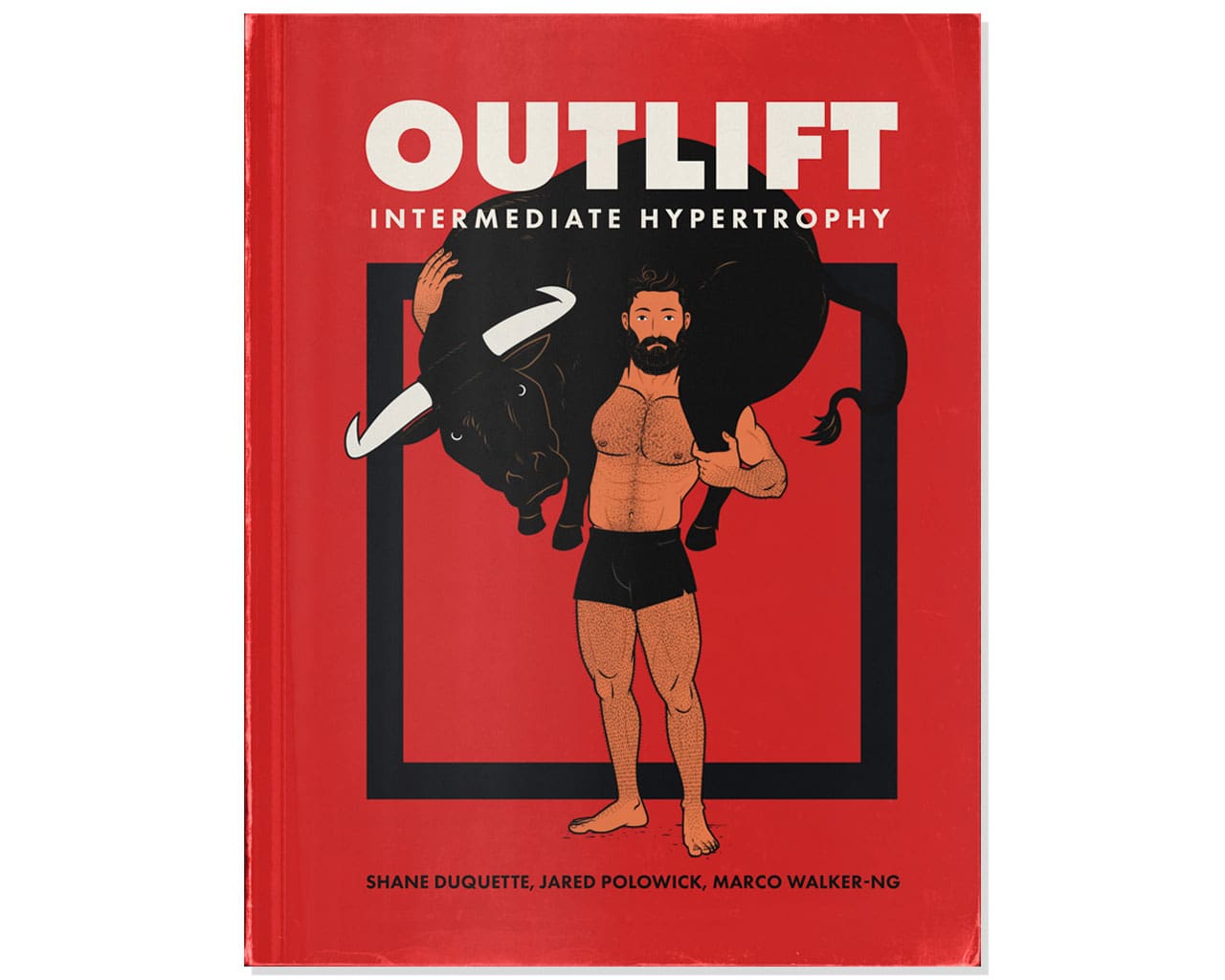
If you want a fully optimized hypertrophy training program, check out our Outlift Intermediate Hypertrophy Program. It’s a 15-week customizable workout routine with guided progressive overload. The program includes 3-day, 4-day, and 5-day workout routines, with easy and hard variations of each. All the exercises are customizable. It also comes with a full hypertrophy training guide.
Each phase is 5 weeks long. The first is loosely inspired by classic bodybuilding, the second by modern natural bodybuilding, and the third uses undulating periodization, as many powerbuilding programs do.



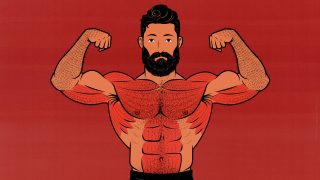
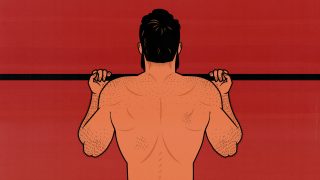
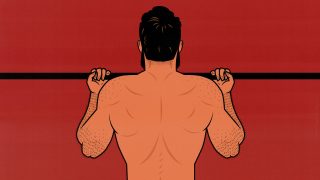

Hello, Shane, the question that bothers me is, for example, in the research, it says to do 4-8 sets for each muscle. Is it true that if we do these 8 sets without one movement for that muscle, something bad will happen?? For example, let’s do 8 sets of chest press in one workout and do all 8 sets of bench press, won’t it change our growth???
Hey Amir, I’m not quite understanding your question.
If you do 8 sets of chest press in one workout, that might not be quite as good as doing 4 sets of bench press + 4 sets of push-ups, but it’s still great, especially if your shoulders aren’t getting beat up.
If you’re talking about weekly volume, you might be able to benefit from doing as many as 20+ sets per muscle, provided you can recover from all of those sets. In that case, you’d be doing chest exercises several times per week. You could do the same exercise every time, but again, it would be at least slightly better to choose a variety of exercises. Your shoulder joint might appreciate it, too.
Nicely done. If I want to focus more on rear delts. Where can I add it?
You could do a rear delt exercise at the end of your Pull workouts. Your rear delts are trained by most pulling exercises, so that’s a good place to add a rear delt isolation exercise.
Thank you for replying. For workouts 5 pull day, t-bar should be wide or narrow? And for pullups can i just use lat pulldown? Same with pullover, could i replace it with lat prayer. Much appreciated
My pleasure, man!
Both t-bar grips are good! Narrow should work your lats more. Wider should work your upper back muscles more.
Yep! You can do lat pulldowns.
A lat prayer is a sort of pullover. Compared to a dumbbell/barbell pullover, it puts more emphasis on your lats and less emphasis on your teres major (the thick muscle underneath your lats). You can absolutely do them. They’re a great exercise.
Nice split. Could you replace deadlift with anything else? I do have trouble balancing a barbell. I could do either smith or another one of rdl dumbbell.
You can replace it with another hip hinge. Dumbbell RDLs are great, yep! Could also do Romanian deadlifts, sumo deadlifts, good mornings, or step ups. Or if you want to work just your hamstrings, leg curls.